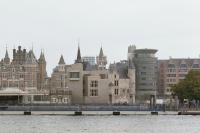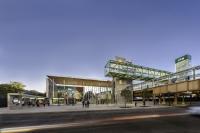Paraisópolis
São Paulo, Brazil
A different logic requires different tools: Sehab decided in 2011 to develop an urban plan for one of the most well known São Paulo’s precarious settlement named Paraisópolis, which since many years has received already numerous interventions by the public authorities. While Paraisópolis has got almost everything—schools, daycare-centers, walk-in clinics, social housing, spectacular public buildings by famous architects, banks, supermarkets, an almost completed basic infrastructure such as sewer, water supply and electricity, even a public park adjacent to the neighborhood is under construction—it lacks in street trees, in porous and green “breathing” areas, in infrastructure and facilities that favor pedestrians and cyclists in general but especially kids and elderly people. Additionally, the increasing amount of cars turns out to be one of the major challenges for the neighborhood. Private owned cars congest the narrow streets and interfere with the lively public activities. Considering the fact that the streets are almost the only existing open space in densely occupied neighborhood, this is particularly devastating. On the other hand, the existing orthogonal street grid that was implemented, regardless of the hilly topography, does not encourage using one’s own feet or a bike. Walks without any shelter from sun, rain and heat on steep streets, crowded by cars are often required to get from A to B. The densely occupied blocks, formed by the street grid prevent “short cuts” by foot or bike. As a consequence, the urban plan for Paraisópolis focuses on non-motorized transport systems; on a reorganized street hierarchy; on additional public transportation means such as aerial trams and funiculars; on the implementation of a network of green spaces, and on more green and permeable streets with street trees, rain gardens and flowerbeds. It is so to speak a “light” plan without major constructional intervention. The plan aims instead at interconnecting and bonding together, what has been constructed so far by the local community and the public authorities. Rather then the addition of new buildings, it suggests making free space and subtracting (bad) building fabric, where it is possible.
- 建筑师
- FABULOUS URBAN
- 位置
- São Paulo, Brazil
- Credits
- Sehab: Ricardo Pereira Leite, Secretary | Elisabete França, Vice Secretary
- Urban design and planning team
- Fabienne Hoelzel, program coordinator | Julia Valiengo | Renata Bruno | Daniela Retz, graphic design with : Jann Erhard and Gregory Valente
- Paraisópolis – slum upgrading program
- Maria Teresa Diniz | Marion Katscher | Rita Mara Nunes | Emílio Issao Iachibana | Felipe Mestre Moreno | Irene Quintáns | Larissa M. R. Rodrigues da Silva | Natália Romano Soares | Patrícia Kremer | Frederico Ronaldo Pinto | Wagner Garcia | Local popu
- Urban design consultancy:
- Arup, New York, USA | Anália Amorim, São Paulo, Brazil | Ciro Pirondi, São Paulo, Brazil | Ruben Otero, São Paulo, Brazil










